Wedding dresses can become powerful symbols that transcend fashion and enter cultural history. From royal ceremonies to celebrity unions, certain bridal gowns have captured our imagination and transformed wedding style forever. These iconic dresses don’t just represent personal taste—they reflect their era while somehow remaining timeless, continuing to inspire modern brides decades later.
1. Grace Kelly (1956)
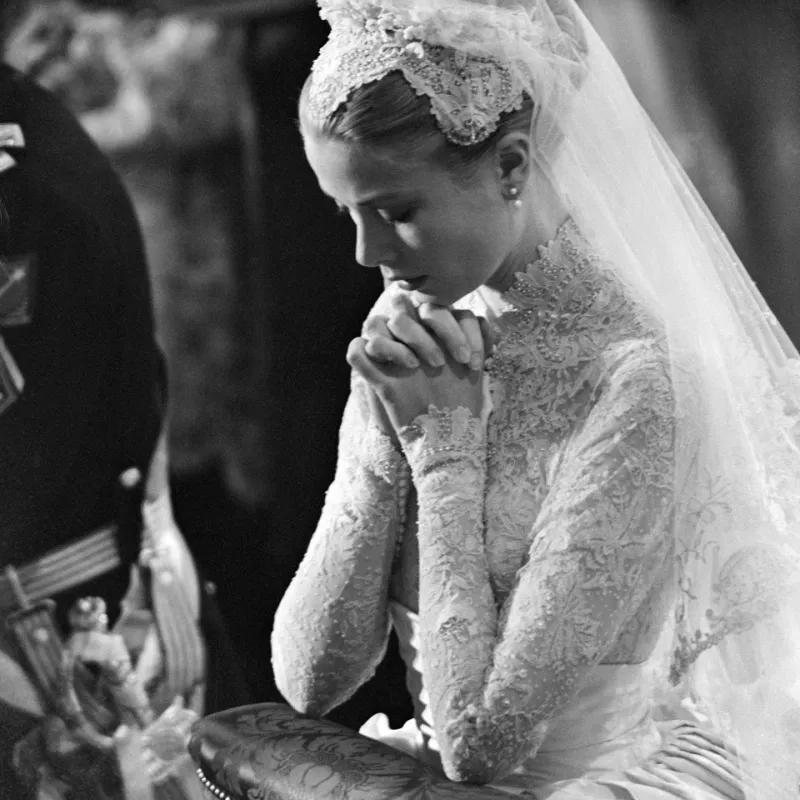
The moment actress Grace Kelly stepped into Monaco’s Saint Nicholas Cathedral, her Helen Rose gown instantly became bridal royalty. With 125 yards of silk taffeta and antique Brussels lace, the high-necked masterpiece took 30 seamstresses six weeks to create.
Her gown’s fitted bodice, full skirt, and modest lace sleeves established the gold standard for classic bridal elegance. The dress was actually a gift from MGM Studios, where Kelly had starred in several films.
Nearly seven decades later, brides still request “Grace Kelly-inspired” designs when shopping for gowns, proving that true sophistication never fades from style.
2. Princess Diana (1981)
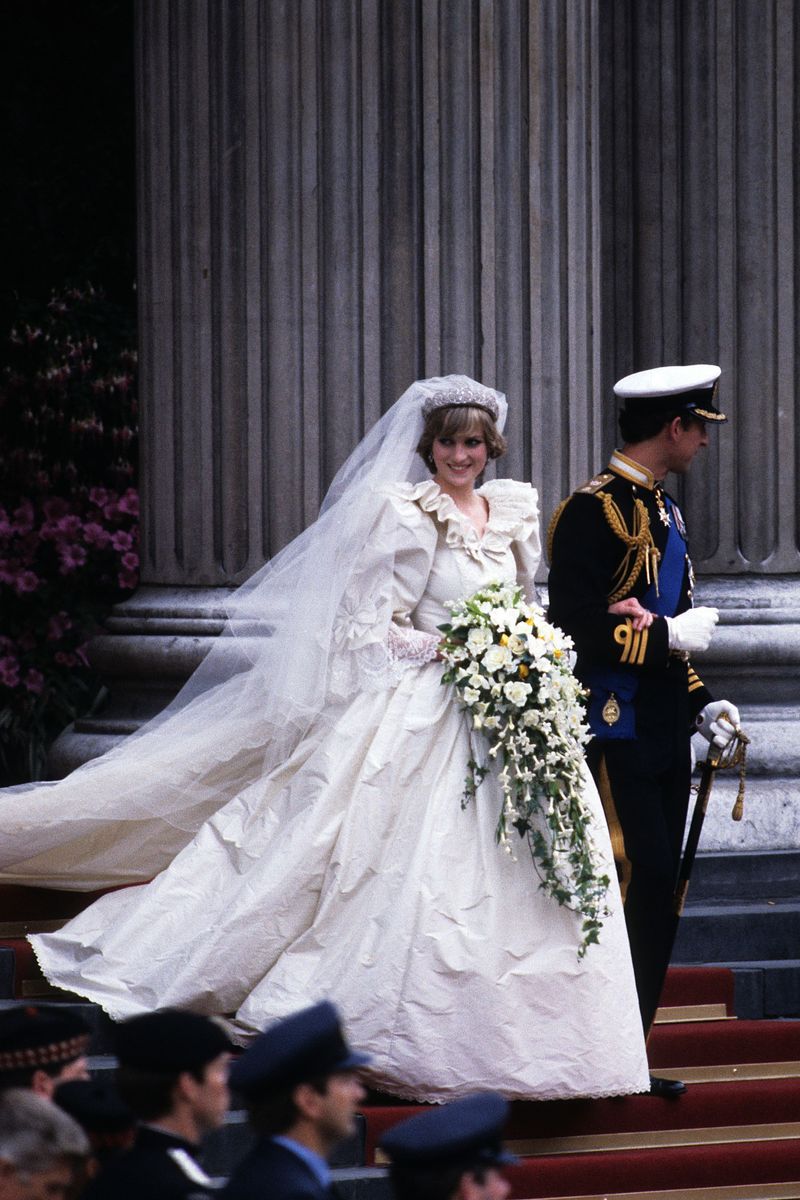
Made from ivory silk taffeta and antique lace, Princess Diana’s wedding gown featured a 25-foot train that barely fit inside the glass coach that delivered her to St. Paul’s Cathedral. The dress, valued at £9,000 in 1981 (equivalent to about £100,000 today), became an overnight sensation.
Designers David and Elizabeth Emanuel created the quintessential 1980s fairy-tale look with its dramatic puffed sleeves, ruffled neckline, and sequin-encrusted bodice. The dress was so voluminous that Diana had to practice walking in it for months. Modern brides still embrace Diana’s bold approach, choosing statement trains and dramatic silhouettes for their own princess moments.
3. Meghan Markle (2018)

Breathtakingly simple yet profoundly significant, Meghan Markle’s wedding gown broke royal tradition with its clean lines and architectural precision. The dress featured just six meticulously placed seams and a boat neckline that framed her face with elegant restraint.
Clare Waight Keller for Givenchy created this understated masterpiece in brilliant white double-bonded silk cady. What the dress lacked in embellishment, Meghan’s 16-foot veil made up for—embroidered with flora representing all 53 Commonwealth countries plus California poppy and wintersweet flowers.
The gown’s minimalist approach sparked a revolution in bridal fashion, with many designers now offering sleek, unadorned options for modern brides seeking sophistication without excess.
4. Kate Middleton (2011)

When Kate Middleton married Prince William, her Sarah Burton for Alexander McQueen gown became an instant classic that would influence wedding fashion for years. The Victorian-inspired corset bodice featured hand-cut English and French Chantilly lace appliqué, meticulously sewn by workers who washed their hands every 30 minutes to keep the lace pristine.
The dress combined tradition with subtle modernity through its slightly padded hips that echoed Victorian corsetry. Kate’s sister Pippa famously carried her 9-foot train as she entered Westminster Abbey.
This perfect balance of timeless elegance and contemporary design continues to inspire countless brides seeking that magical middle ground between conventional and current.
5. Bianca Jagger (1971)
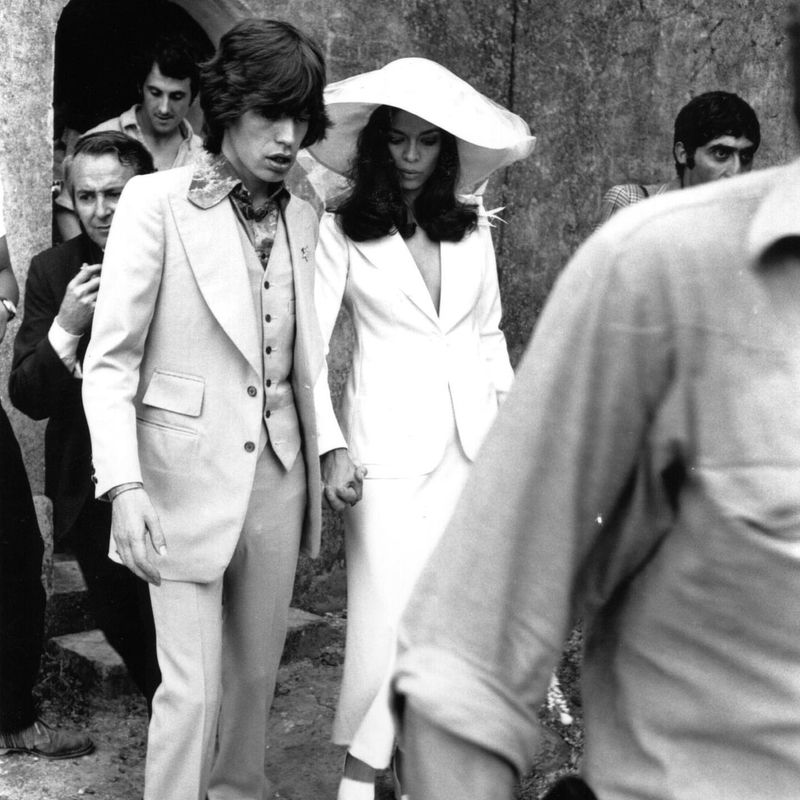
Rock royalty met fashion revolution when Bianca Jagger married Rolling Stones frontman Mick in Saint-Tropez wearing a white Yves Saint Laurent Le Smoking jacket with nothing underneath. The Nicaraguan beauty paired her tailored jacket with a languid skirt and topped it with a dramatic wide-brimmed hat adorned with veiling.
Four months pregnant at the time, Bianca eschewed traditional bridal styles for this boundary-breaking ensemble. The couple famously arrived at the town hall in a fleet of Rolls-Royces filled with celebrity guests.
Her fearless fashion choice paved the way for brides seeking alternatives to conventional gowns, inspiring generations of women to wear suits, separates, and unconventional silhouettes on their wedding day.
6. Elizabeth Taylor (1950)
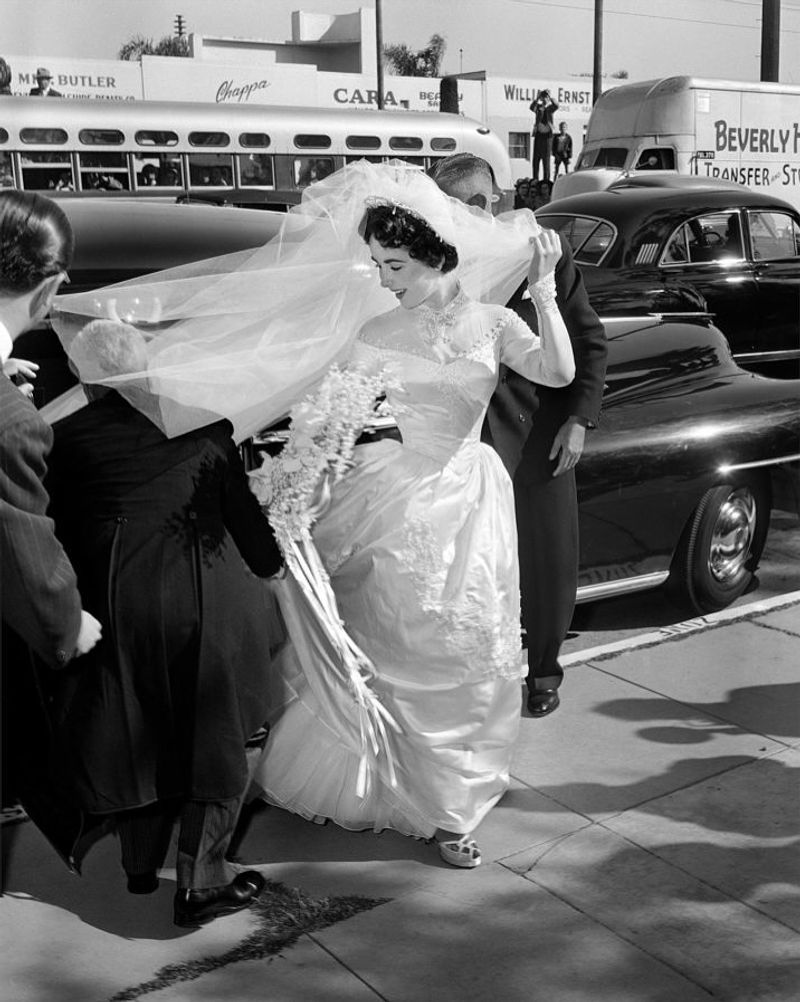
For her first of eight marriages, 18-year-old Elizabeth Taylor wore a satin gown with a sweetheart neckline designed by MGM’s Helen Rose. The dress embodied post-war optimism with its nipped waist and voluminous skirt—the same silhouette that defined Christian Dior’s revolutionary “New Look.”
Taylor accessorized with a pearl-encrusted Juliet cap and carried white orchids and lilies of the valley. Though this marriage to Conrad Hilton lasted less than a year, the dress remains an enduring symbol of mid-century bridal glamour.
Taylor’s subsequent wedding looks—including a hooded yellow chiffon dress for Richard Burton and a rainbow-hued caftan for her second marriage to him—showcase how bridal fashion can reflect personal evolution and changing times.
7. Audrey Hepburn (1954)
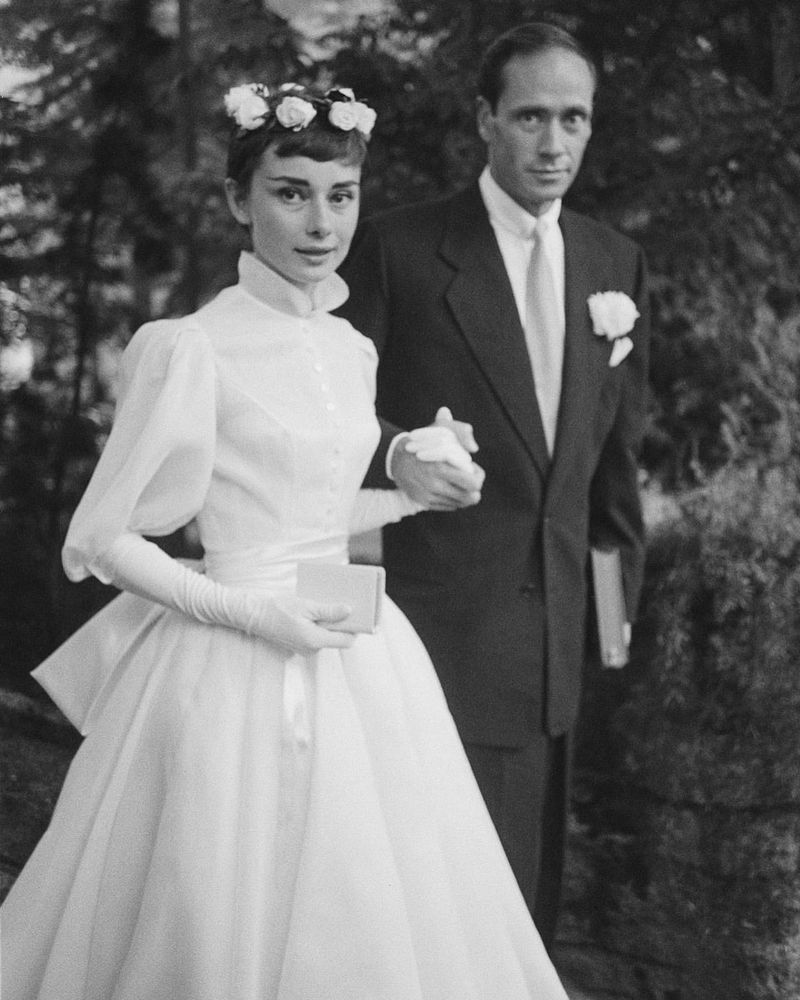
Before becoming synonymous with Givenchy, Audrey Hepburn chose Pierre Balmain to create her first wedding dress—a tea-length confection with a high neck, tiny waist, and billowing sleeves. The ballerina-length hemline perfectly showcased her dancer’s legs and allowed for movement during her garden ceremony with Mel Ferrer. Hepburn topped her look with a crown of fresh roses instead of a traditional veil.
This marriage came just after her Oscar win for “Roman Holiday,” when her gamine style was beginning to influence fashion worldwide. Her choice of a shorter dress revolutionized bridal fashion, giving women permission to embrace practical yet feminine silhouettes. Today, tea-length wedding dresses remain popular for brides seeking vintage charm with modern mobility.
8. Jackie Kennedy (1953)
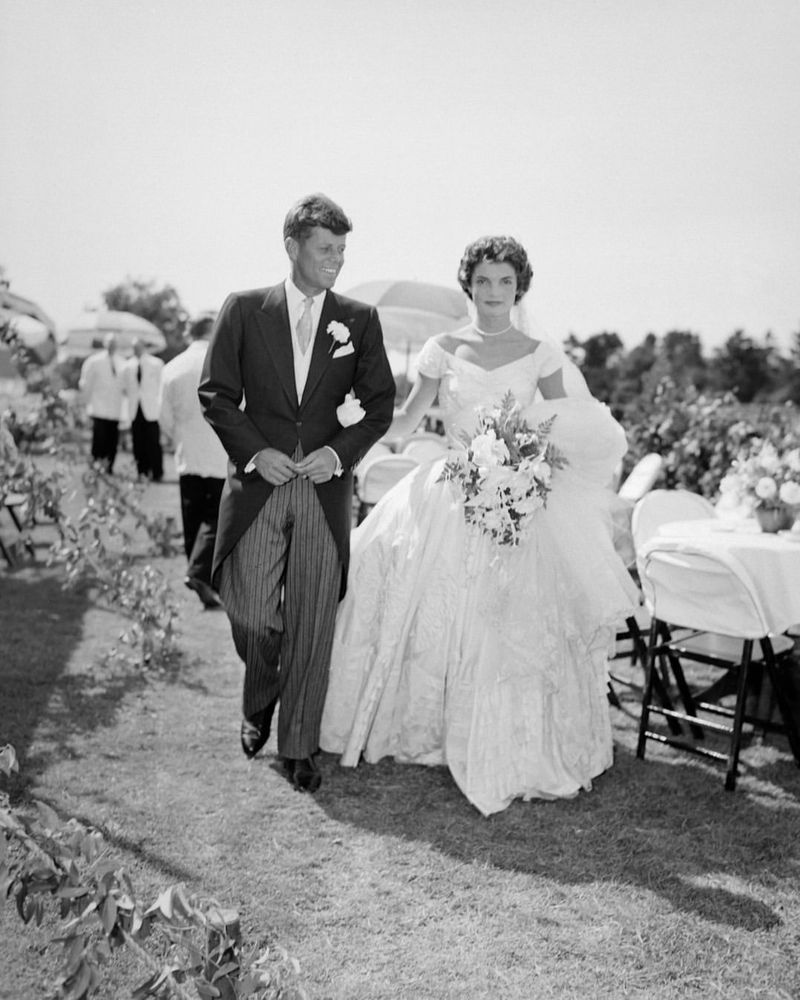
When Jacqueline Bouvier married Senator John F. Kennedy, she wore an off-shoulder portrait neckline gown with a bouffant skirt made from 50 yards of ivory silk taffeta. The dress was designed by Ann Lowe, an African-American couturier whose crucial contribution to fashion history went largely uncredited at the time.
Disaster struck just ten days before the wedding when a pipe burst in Lowe’s studio, destroying the original dress. Heroically, she and her team recreated the entire gown in a week and a half. Jackie’s dress epitomized the early 1950s ideal of feminine grace with its waspish waist and voluminous skirt, creating a silhouette that continues to inspire traditional American bridal fashion.
9. Dita Von Teese (2005)
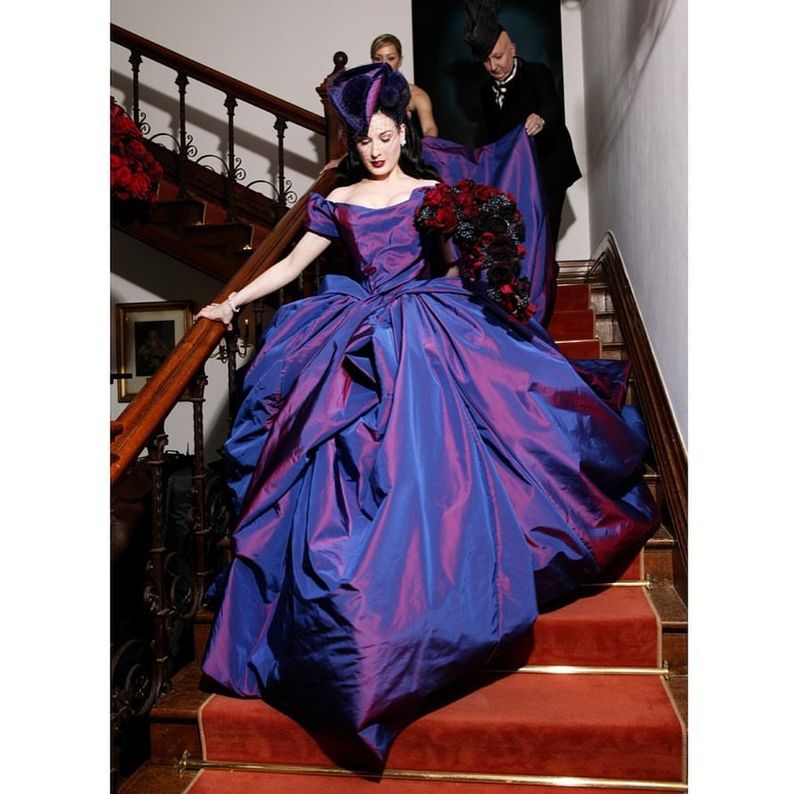
Burlesque performer Dita Von Teese shattered bridal conventions when she married Marilyn Manson wearing a vivid purple taffeta gown.
Designed by Vivienne Westwood, the dramatic dress featured a fitted corset bodice and sweeping skirt, complemented by Von Teese’s signature raven hair and crimson lips. Her unique bridal look was completed with a tri-cornered hat sporting purple pheasant feathers.
Though the marriage lasted only a year, the dress became an instant fashion legend. Von Teese’s bold color choice liberated countless brides from white-dress traditions. Today, designers regularly include non-white options in their bridal collections, from subtle blush and champagne to dramatic black and vibrant jewel tones.
10. Yoko Ono (1969)

When avant-garde artist Yoko Ono married John Lennon in Gibraltar, her unconventional outfit perfectly captured the counterculture spirit of the late 1960s. She wore a white minidress, knee-high socks, and tennis shoes topped with a floppy sun hat and signature round sunglasses.
The couple’s wedding was arranged in just three days after they received their marriage license. Their honeymoon became the famous “Bed-In for Peace” protest against the Vietnam War. Ono’s casual approach liberated brides from formal wedding traditions, showing that personal expression matters more than convention.
Her influence lives on through modern brides who choose comfort and authenticity over elaborate formality.
11. Solange Knowles (2014)
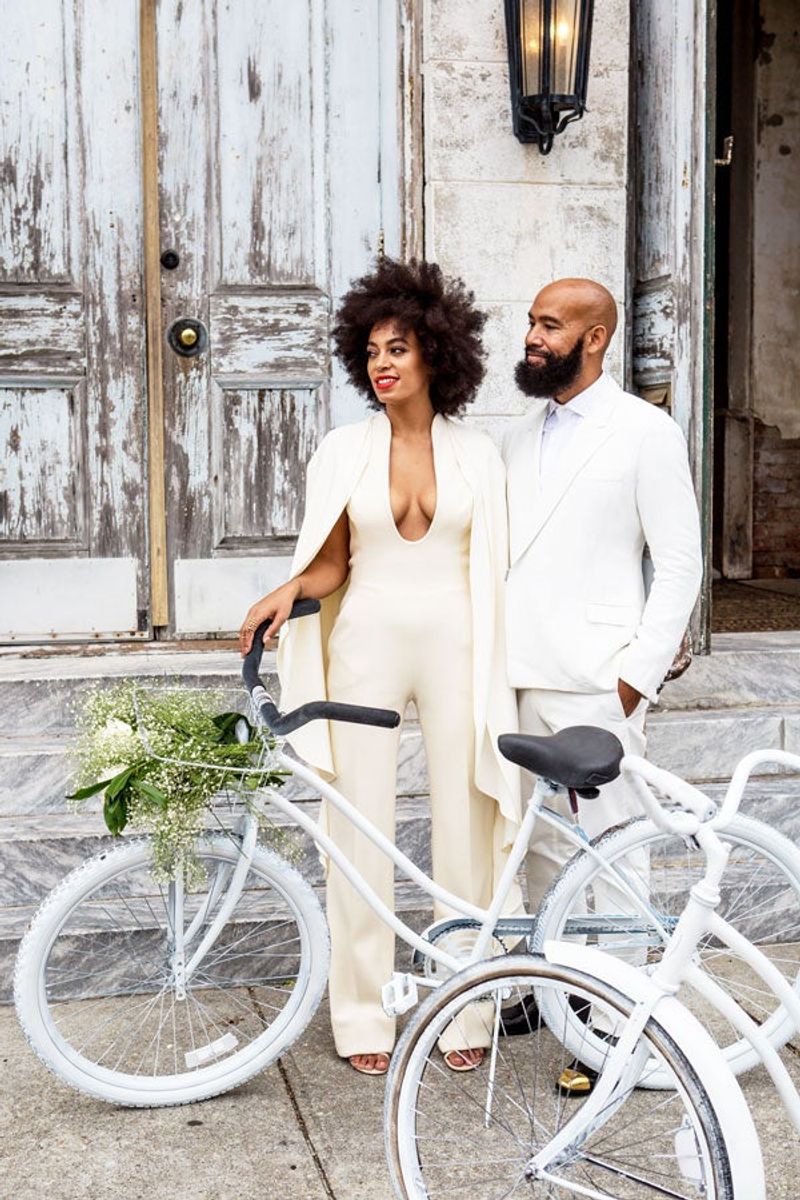
Solange Knowles redefined bridal fashion when she arrived at her New Orleans wedding to Alan Ferguson on a white-painted bicycle wearing an ivory Stéphane Rolland jumpsuit with an attached cape. For the ceremony itself, she changed into a Humberto Leon for Kenzo gown with clean lines and structural elegance.
The all-white wedding party created a striking visual statement against the backdrop of the historic Marigny Opera House. Vogue immediately declared her “the most stylish bride of all time.” Solange’s fashion-forward choices inspired a wave of bridal jumpsuits, capes, and minimalist silhouettes. Her wedding proved that bridal fashion could be both avant-garde and timeless without a traditional gown.

Comments
Loading…